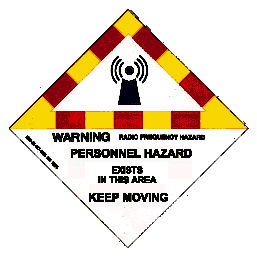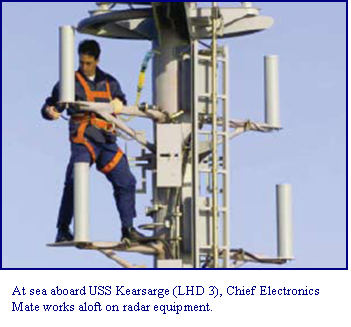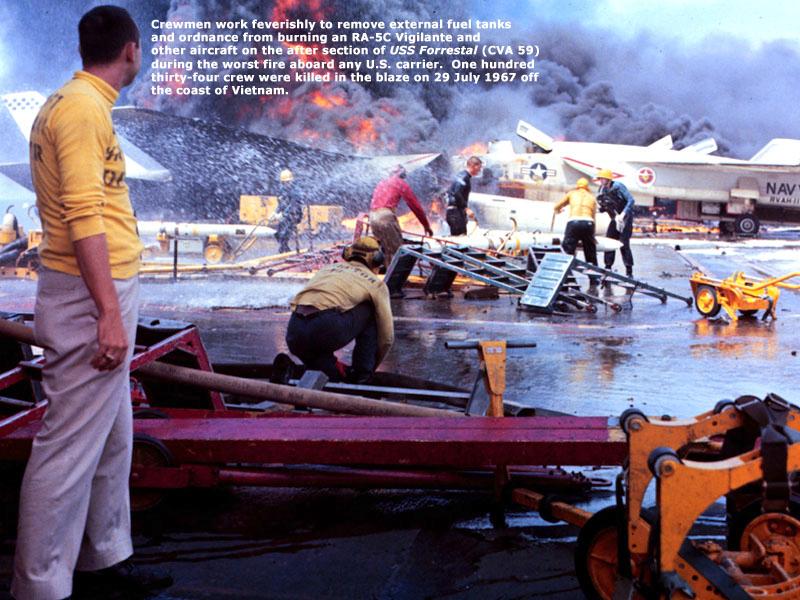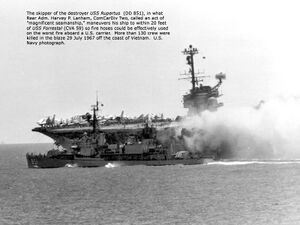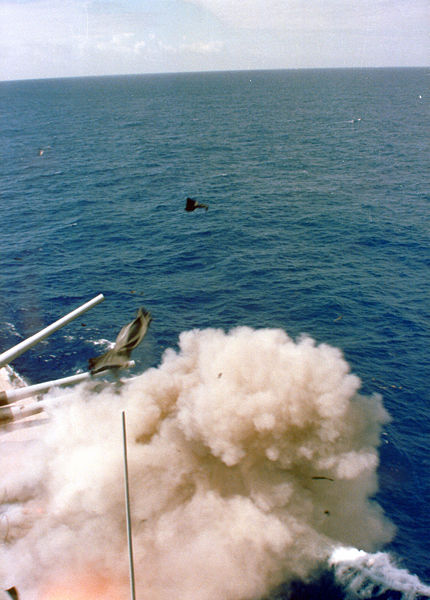Safety and survivability of naval vessels: Difference between revisions
Pat Palmer (talk | contribs) mNo edit summary |
mNo edit summary |
||
| Line 98: | Line 98: | ||
==References== | ==References== | ||
{{reflist|2}} | {{reflist|2}}[[Category:Suggestion Bot Tag]] | ||
Latest revision as of 11:01, 14 October 2024
| This article may be deleted soon. | ||
|---|---|---|
Most modern warships have high-power radar and radio equipment that require significant safety precautions. [1] Aircraft carriers and warships operating helicopters also offer the danger of being run over by aircraft, sucked into jet engines or cut in half by a snapped arresting wire. These hazards are present in peacetime, when the sea is both friend and foe. In active warfare, natural and "friendly" threats are joined by other people using their best ability to do more damage than the sea.
Beyond the measures prescribed for civilian vessels by the Safety of Life at Sea convention, warships need specialized protective systems as well as procedures for safe handling of things designed to blow up and break things. From the mid-nineteenth to the mid-twentieth century, warships relied on passive armor to limit damage. While there is still selective use of armor, usually ceramic or Kevlar rather than steel, the increased lethality and accuracy of modern weapons has diminished the value of armor. Instead, passive protection is more associated with low observability and not being hit. Modern passive protection from kinetic damageIn general, warships are most concerned about being struck by a torpedo or mine, which explode below the waterline, than from shells or bombs. Underwater explosions let water in, while hits above the waterline will provide a path for air — unless they spread fire, or penetrate deeply enough to create holes below the waterline. Newer ships have mechanical shock protection. In the Gulf War, the cruiser USS Princeton (CG-59) and the Landing Platform Helicopter USS Tripoli (LPH-10) survived mine explosions that would have snapped WWII ships in half. Burke-class destroyers have considerable Kevlar protection around critical parts of the superstructure. Flooding and fire protectionU.S. Navy standard "material conditions" are representative of the tradeoffs between convenience and ship integrity:
Chemical, biological and radiological protectionWhile watertight integrity can be adequate, at least in surface vessels — submariners say there is no such thing as a minor leak while submerged — complete gas-tight sealing, as well as the shutdown of ventilation systems, may be necessary if there is a threat from inhalation. Even tighter than condition ZEBRA is CIRCLE WILLIAM, the condition to be set under CBR conditions. Ships often have external water spray systems for decontamination; if crew members have to go into areas before decontamination, the appropriate respirators and skin protection must be worn. FallsSince the first sailing ships, there have been high places aboard vessels, which may be dangerous even in good weather and bright daylight. While the sail-handling crew often took pride in running along the spars to which sails were attached, or scrambling up masts, modern standards call for the use of safety harnesses and restraints. Not only can one fall from a high mast, there are falling hazards through hatches, ventilators, and large open areas such as engine rooms. Again, unless the situation is desperate, if working over anything where there is a significant drop, harnesses should be worn; if near the water, life jackets are also appropriate, as well as a rule never to work alone. Electromagnetic HazardsElectromagnetic radiation can injure humans, and also detonate weapons.
Hazards of Electromagnetic Radiation to Personnel (HERP)Radar and radio trasmitters present a biological hazard to personnel working on, or in the vicinity of, these systems. It is not a coincidence that the everyday microwave oven derives from military radar technology. Burns can be produced not only by radiation, but by having a body part form a conductive path; this is equally a danger from direct current power supplies as from radio and radar frequencies.
In the presence of strong radio signals, especially in the very high frequency (VHF) and lower frequency range, metal cables, or any metal object long enough to act as an antenna, can be a shock or burn hazard. Other than in desperate emergency conditions, the power to all antennas, where a crew member is to go aloft, should be physically disconnected. The sailor going aloft may put a safety lockout through the power switch and keep the key. Even receiving antennas can be dangerous if they can rotate, and hit a sailor with considerable force. Hazard of Electromagnetic Radiation to Ordnance (HERO)The high intensity RFR fields produced by electromagnetic transmitting equipment can cause sensitive electrically initiated devices (EIDs), also called electro-explosive devices (EEDs), internal to ordnance to actuate prematurely. RFR energy may enter an ordnance item through a hole or crack in its skin or through firing leads, wires, and so on. The greatest hazards tends to be when connections are made or broken, either by mechanical disconnection or electrical switching; a surge in a power supply switch triggered the USS Forrestal catastrophe; the safety mechanisms protecting the ordnance had been disabled.
Other electrical problems can affect ordnance. As shown in the images of the Forrestal fires, 134 men were killed and 161injured, started when an Zuni air-to-ground 5" rocket, aboard an F-4 Phantom II fighter, piloted by Jim Bangert fired, when it was switched from external to internal electrical power. [2] The rocket and its launching triple ejector rack each had a separate electrical connector that enabled the rocket to be launched. The two arming connectors were to be inserted, under standard operating procedures, only when the aircraft was on the catapult, weapons aimed in a safe direction. To improve speed, the ship's Weapons Coordination Board (WCB) approved the early insertion of one of the pins. Unfortunately, the WCB never forwarded its recommendation to higher authority, and, without consultation, flight deck crews had also decided to find a faster way to launch, by pre-inserting a connector. Unfortunately, that connector was the second of the two. Each group assumed that the other pin was not yet installed, so the fighter was moved along the deck with both arming pins in place. When the rocket fired, it shot across the deck and hit an A-4 Skyhawk attack aircraft piloted by John McCain, tearing open its fuel tank and starting a major fire, which, in turn, set off bombs. Explosive ordnance safetyThe Forrestal fire, as well as the earlier Oriskany fire were especially catastrophic because the best-trained firefighters were killed or disabled in the first blast. One of the traditions of the U.S. Marine Corps is that every Marine, of every rank and skill, is always qualified as a rifleman. The United States Navy had already had a strong tradition of training in damage control, but these incidents led to a tradition that every sailor is always qualified as a firefighter. Since carrier aircraft and naval ordnance are in much closer proximity than at a land base, bombs, missiles, and other ordnance approved for carrier use often has a coating of thermal insulation, to buy more time for firefighters and explosive ordnance disposal personnel to get to the endangered weapon. These explosives also are likelier to be in strong electromagnetic fields than on shore. When Army helicopters began to operate from Naval vessels, they often had to jettison their weapons into the sea before landing, since the Army weapons had neither the thermal nor the electromagnetic protection required for carrier safety. During a firing exercise, there was a catastrophic explosion in a 16" gun turret aboard the battleship USS Iowa'. The cause has never been definitively established, but the most generally accepted technical explanation is that bags of loose propellant (i.e., smokeless gunpowder) were rammed too quickly into the breech of the gun. [3]
Aircraft operations safetyIt is clearly unhealthy to be in the path of a moving aircraft or a helicopter rotor. These are only a few of the hazards especially on the deck of an aircraft carrier, but also in the flight operations areas of destroyers and cruisers. Jet engines are far noisier than the loudest hard rock band; it is not a question if one's hearing will be damaged by unprotected exposure, but how quickly permanent damage happen. [4] The arresting wire system of an aircraft carrier using the CATOBAR (CATOBAR) technique takes extreme stress in decelerating a multi-ton aircraft, moving at 150mph/240 kph, to stop in seconds. In spite of careful inspection, in spite of calculated braking systems on the wires, they sometimes snap. A breaking arresting wire has immense kinetic energy and moves in unpredictable ways. In a 2005 accident with a wire break, there were three major and three minor casualties among the 26 personnel on the deck and two in the aircraft, which created a mass casualty incident even aboard a ship that could expect hundreds of casualties.[5] As well as being a firefighter, every sailor must be a medical first responder; it was a air department chief petty officer that applied an appropriate tourniquet to the worst-injured sailor, who had a below-the-knee leg amputation. References
|
||
- Pages using duplicate arguments in template calls
- Articles for deletion November
- CZ Live
- Military Workgroup
- Engineering Workgroup
- United States Navy Subgroup
- Royal Navy Subgroup
- Articles written in American English
- All Content
- Military Content
- Engineering Content
- Military tag
- United States Navy tag
- Royal Navy tag
